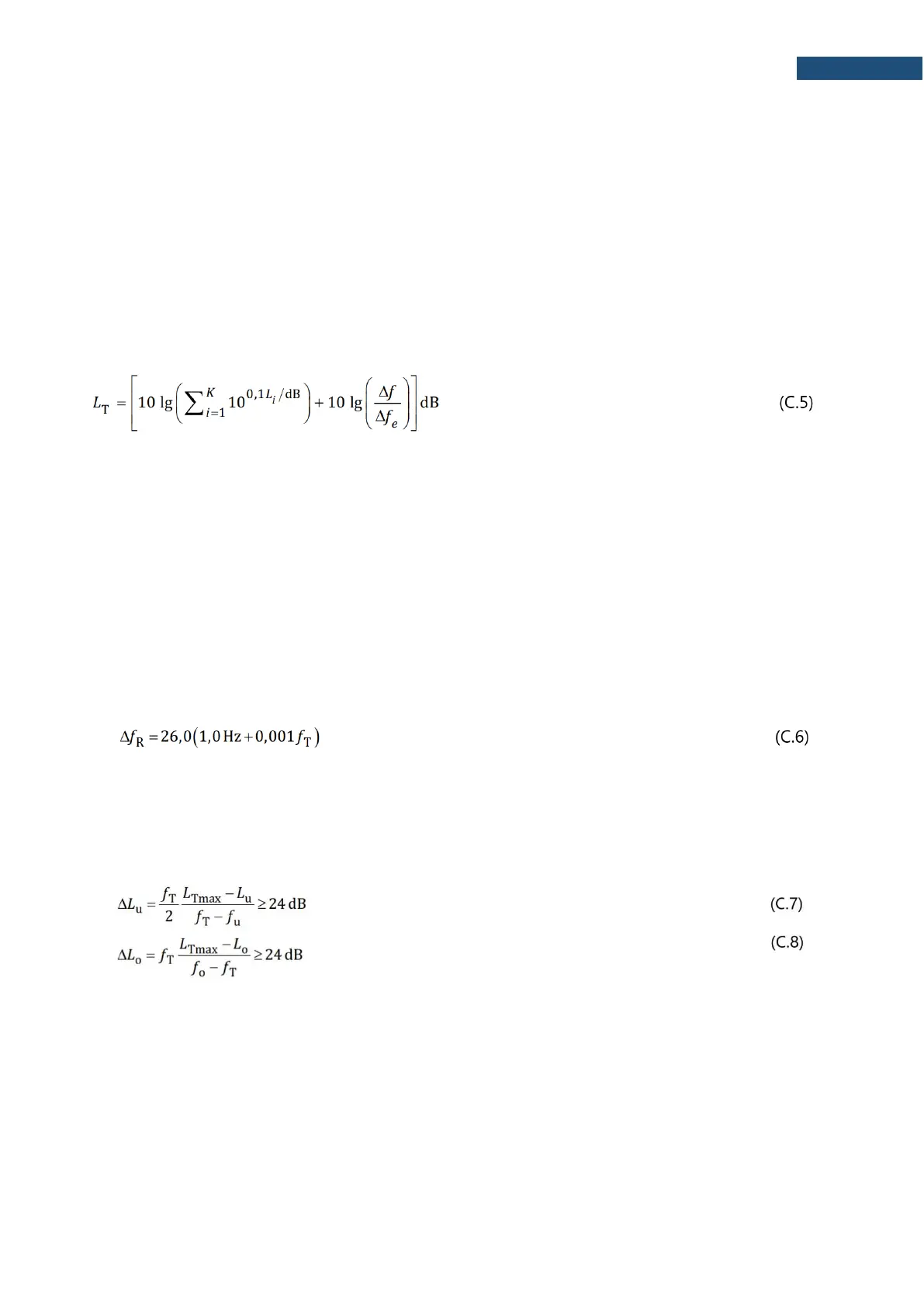SV 977D User Manual - Appendixes
Tone level of a tone in a critical band, L
T
The mean narrow-band level is derived in an iterative procedure from the lines of the critical band about the
line under investigation.
Neighbouring spectral lines should be used for summation purposes if - they differ from the narrow-band level
at a frequency, f
T
, by less than 10 dB, and - they differ from the mean narrow-band level, L
S
, of the masking
noise within the critical band about the tone by more than 6 dB.
In case there are no other spectral lines than the line under investigation meets the requirements, the tone level
of a tone is equal to the narrow-band level of the spectral line of this critical band with tone energy, in
decibels (dB).
In case there are more spectral lines with tone energy, the tone level of a tone is calculated as in the
equation (C.5):
NOTE 1. The second addend of the equation (C.5) could be simplified and used as a constant summand equal
to -1.76 dB. It’s possible since we apply the Hanning window, that provides the effective bandwidth Δf
e
be 1.5
times the frequency resolution Δf.
NOTE 2. The individual levels of the spectral lines with tone energy also contain energy components of the
masking noise. These can generally be neglected.
Distinctness of a tone
The distinctness of a tone depends on the bandwidth of the tone and its edge steepness; if the corresponding
criteria are not satisfied then the tone is not audible to individuals with normal hearing.
If a tone based on bandpass noise has a distinctness of 70% relative to that of a sinusoidal tone, then the
maximum permitted bandwidth Δf
R
as a function of the tone frequency f
T
is approximated by equation (C.6):
First criterion: The bandwidth of the tone (the number of spectral lines used in the equation (C.5) multiplied by
the line spacing, Δf.) shall not exceed the maximum permitted bandwidth given by equation (C.6).
Second criterion: The edge steepness shall be at least 24 dB/octave. This yields the level differences between
the maximum narrow-band level of the tone, L
Tmax
, and the narrow-band levels of the first spectral line below
the tone L
u
and above the tone L
o
must meet the criteria (C.7) and (C.8):
where
f
u
is the frequency of the first spectral line below the tone, in Hertz (Hz);
f
o
is the frequency of the first spectral line above the tone, in Hertz (Hz);
f
T
is the frequency of the maximum narrow-band level, in Hertz (Hz).
